I have written a few blogs over the past year that have mentioned robots and now I have bought one. It's probably not the sort of robot you are thinking of either.
After ten years my 24hp 450kg lawn tractor has been replaced by an equally expensive but 10kg Husqvarna automower. It claims to run on Euro 35 of electricity per year vs perhaps Euro 300 of petrol. Other savings include my time and the environmental impact of producing 10kg of what looks like mostly plastic (in reality probably mostly lithium ion battery) vs 450kg of mostly metal.
The automower meets one of the 3D which determine which jobs will be taken by robots. The 3D are Dull, Dangerous and Dirty. At the start of the year I somewhat enjoy cutting the grass but here in Ireland during the Summer, the grass needs to be cut every 5 days and it gets dull.
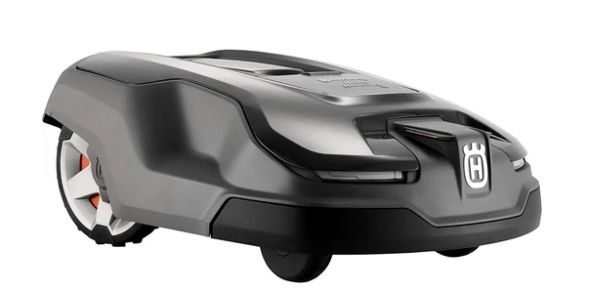
Figure 1 - My automower
Installing the robot took most of a day because I installed it myself. You need to run a perimeter wire all around the boundary of the lawn and tap it down with small pegs, the mower turns when it detects a signal from that boundary wire. You can add in small loops to go around flower beds and large objects which might damage the robot. The straight wires out to the loops should be run close together, which I presume cancels the electric field from the perimeter wire. An example of such a loop is shown in the picture below.

Figure 2 - How to avoid objects like trees using a loop of the perimeter wire around them.
You can also run guide wires to help the mower to access hard to reach areas such as “A” in the figure above. I installed three such guide wires. When leaving its charging station, the robot travels a random amount down a guide wire and leaves the wire at a random direction. The guide wire also helps the robot find the charging station when the battery goes low. It could follow the perimeter wire but it is quicker to follow one of the guide wires when it meets one.
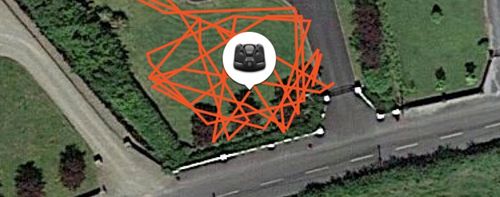
Figure 3 - screenshot from the phone app showing the random robot path around a garden
When mowing the robot travels around the garden in a pseudo random pattern. On versions with a GPS sensor, the mower uses the GPS to tell when it hasn’t been in a certain part of the garden for a long time. There is also an app which allows you to see where the robot is now, be alerted if the robot is stopped or has left a defined security area, when the cutting height is adjusted and tell the robot to park.

Figure 4 - Me watching the robot do all the work.
One problem with the automower is that I thought I could use the over-run setting to keep it back from my daffodils. Over-run is how much it can go past the boundary wire before it turns. However, it turns out the setting is uni-polar and so you can only increase the overrun and not reduce it. Therefore, I will have to use my ride on mower until May.

Figure 5 - Daffodils holding up deployment of the automower.
Another problem is finding line breaks in the perimeter wire. Back in January I powered up the base station and robot to ensure the guide wire was still intact which it was. Last weekend I also powered it up and got a blue flashing light indicating a break in the perimeter guide wire. You can localize the fault to one of three segments using the guide wires put in to enable the mower to access hard to reach parts of the garden. If you use the guide wires as part of the debug eventually you are left with a 100m segment where you can find the break using a portable radio. As you move the radio across the connected part of the wire it goes from slight noise, to quiet, to increased noise. You crawl on your hands and knees waving your radio until you find a quiet part of the wire. It took about an hour to find the break and it turns out I had broken it by sticking a spade in the ground while taking a break while planting some potatoes. A fully autonomous mower would not need the guide wire and I guess the problem is somewhat analogous to that with an AGV in a factory setting which also needs a guide wire.
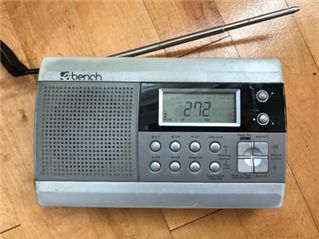
Figure 10 -portable radio tuned to 272khz using to find a perimeter wire break
This is a functional safety blog and safety guys loves standards so I wonder which standards might apply in this case. The automower can be classified as an autonomous robot since it responds to inputs from sensors (perimeter wire and ultrasonic collision), decides what to do and does not require constant supervision.
The automower doesn’t meet the definition of an industrial robot from ISO 10218-1 (not programmable in three or more axes and not for use in industrial automation applications). It would however seem to meet the definition of a service robot from ISO 13482.

Figure 6 - Definition of a service robot from ISO 13482
Most mobot (mobile robot) standards such as ISO 3691-4, R15.08, B56.5 deal with industrial robots so on balance I think ISO 13842 is the most applicable.
ISO 13848 uses the performance levels from ISO 13849 as the measure of the safety achieved and robots traveling up to 20 km/h are in scope.
ISO 5395-1 applies to garden lawnmowers with combustion engines and so is not relevant to battery powered electric lawnmowers.
IEC 60730-1 on control systems for home appliances would also seem relevant.
Looking in the user manual to see what standards might apply I find mention of 2006/42/EC – the machinery directive
EN 50636-2-107:2015 – Safety of household and similar appliances – Part 2-107 – Particular requirements for robotic power electrical lawnmowers
The user manual lists several standards related to noise and EMC.
Since the automower is a machine the risk assessment should be based on ISO 12100 and ISO 12100 and associated standards insist on the following hierarchy of disk reduction measures. First try to eliminate the risk, if that is not possible engineer a solution (for instance a safety function or a guard) and lastly warn and inform. I think the automower guys have gone with the elimination of risks making the functional safety standards not applicable. An example of eliminating the risk on automowers is the blades.
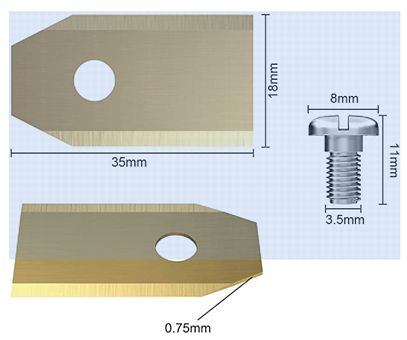
Figure 7 - automower blades
The automower blades are really small compared to the blades on a traditional mower. They also fold back in if they hit an obstacle and come back out due to centrifugal force once the base begins to spin freely again (I think this is to save the blades rather than prevent an accident). I can see them cutting but not amputating a limb. If you Google lawnmower accidents and children you will see lots of references including this one which says the US has over 86,000 lawn mower related accidents per year with more on lawn tractors than push mowers. The tiny blades should definitely help. The robots also have a low mass and rounded sides so the hazard from collisions should be low. They could however represent a trip hazard. There is a sensor which detects if the mower has been turned upside down and stops the blades.
I’m sure there are other relevant standards such as those related to lithium ion battery charging systems but that is a topic for another day.
All in all, I am very happy with my automower and I’m wondering what’s next. So far, the market for home robots has been mixed with quite a few companies burning money but not getting much success. I particularly like the cute Mayfield Kuri as seen in this video. Unfortunately I believe this Bosch backed initiative is now wound up, see here for more. Perhaps the need is for more than intelligent pets. The Kuri is not alone and I believe the Honda Asimo is now also retired.
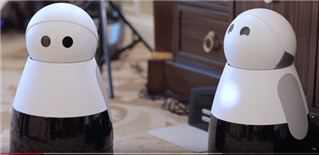
Figure 8 - Mayfield Kuri
Other massive growth areas for robots are personal care robots which target care of the elderly as opposed to saving time around the house and perhaps I will do a blog on those in future.
Authored By: Tom Meany, Functional Safety Technical Specialist – Industrial and Instrumentation, Analog Devices

